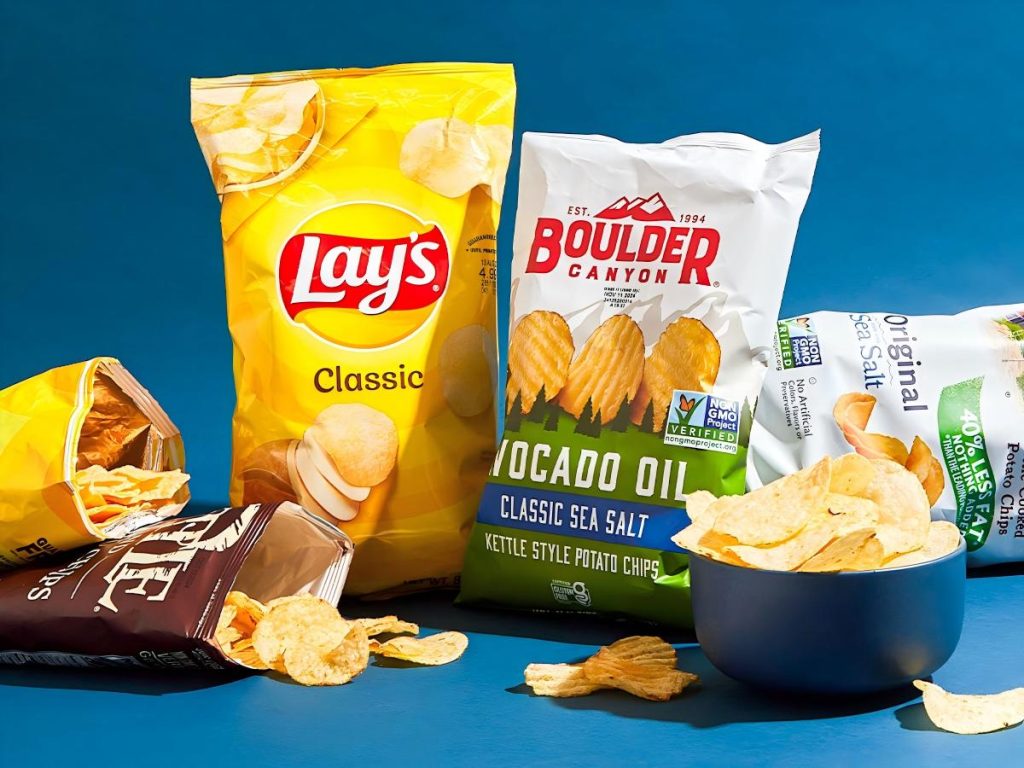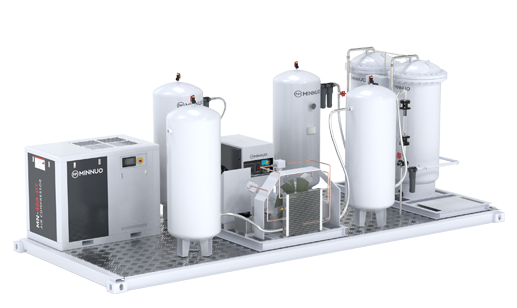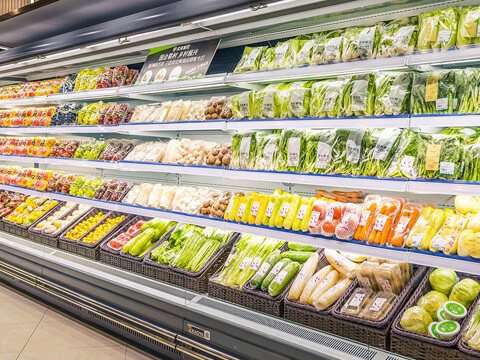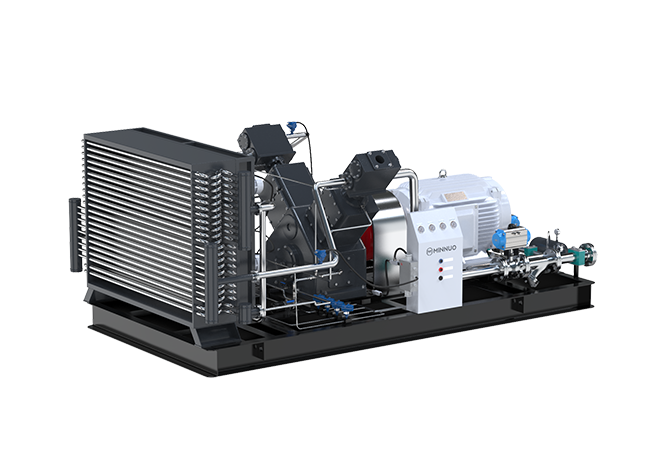Have you ever grabbed a bag of potato chips, torn it open, and wondered why there’s so much “empty space” inside? You’re not alone—this question pops up in snack aisles, family kitchens, and even casual conversations all the time. After all, no one wants to feel like they’re paying for air instead of the crispy, salty chips they crave. But what if that “air” isn’t just air? What if it’s a carefully chosen gas that’s the secret to keeping your chips fresh, crunchy, and ready to eat for weeks?
The “air” in potato chip bags is actually high-purity nitrogen—not the regular air we breathe, which is mostly nitrogen (about 78%) mixed with oxygen (21%), water vapor, and other gases. The reason manufacturers fill chip bags with nitrogen boils down to three key needs: stopping oxidation (which makes chips go stale), preventing moisture buildup (which turns crispy chips soggy), and protecting the chips from physical damage (nitrogen acts as a cushion during shipping). For snack brands, getting this nitrogen right isn’t just a small detail—it’s a make-or-break part of their product quality. And that’s where reliable nitrogen generation equipment comes in. In this article, we’ll break down why nitrogen is non-negotiable for chip freshness, how nitrogen generators work to supply this essential gas, and what to look for when choosing a nitrogen solution—whether you’re a large snack manufacturer or a business needing nitrogen for other uses.

First, let’s get to the core: Why nitrogen, not regular air?
To understand why chip bags are filled with nitrogen, we need to start with what ruins potato chips. Potato chips are mostly fat and starch, two ingredients that are very sensitive to their surroundings. Let’s break down the problems regular air causes—and how nitrogen fixes them:
1. Oxygen in air makes chips go stale (and even rancid)?
Regular air is 21% oxygen, and oxygen is a troublemaker for snacks. When chips are exposed to oxygen, a process called oxidation happens: the oxygen reacts with the fats in the chips, breaking them down over time. This doesn’t just make the chips lose their crunch—it creates off-flavors (think “stale” or even slightly bitter) and can even make them unsafe to eat if oxidation goes too far.
Nitrogen, though, is chemically inert—it doesn’t react with fats, starches, or any other ingredients in chips. When a chip bag is filled with nitrogen, the gas pushes out almost all the oxygen (most snack manufacturers aim for less than 1% oxygen left in the bag). This stops oxidation in its tracks, keeping chips tasting fresh for weeks—sometimes months—past their production date.
2. Moisture in air turns crispy chips soggy?
Regular air also has water vapor, and moisture is the enemy of crunch. Potato chips are ultra-dry (they’re about 2% moisture, compared to raw potatoes which are 80%+), so they act like little sponges—they absorb moisture from the air quickly. Even a tiny bit of extra moisture makes the starch in chips soften, turning that satisfying “crunch” into a sad “squish.”
High-purity nitrogen, though, is dry (especially when generated with systems that remove moisture). When you fill a chip bag with dry nitrogen, you’re not just keeping oxygen out—you’re also locking out moisture. This keeps the chips’ texture consistent from the first bite to the last, no matter how long the bag sits on the shelf.

3. Nitrogen acts as a “cushion” to protect chips from breaking?
Ever opened a bag of chips and found nothing but crumbs? That’s usually because the bag wasn’t filled with enough protective gas. Potato chips are fragile—they break easily when jostled during shipping or stacked in stores. The nitrogen in the bag acts like a cushion: it fills the empty space, absorbing shocks and preventing the chips from crushing against each other. Without that nitrogen “buffer,” most chip bags would arrive at stores full of crumbs—bad for customers, and bad for brands.
For snack manufacturers, these benefits aren’t just nice to have—they’re essential. A study by the Snack Food Association found that stale or crushed chips are the top reason customers return snack products, costing brands millions in lost sales each year. Nitrogen isn’t just a “filler”—it’s a cost-saving, quality-preserving tool.
How is the nitrogen for chip bags made? Meet the nitrogen generators
Now that we know why nitrogen is crucial for potato chips, the next question is: Where does all that nitrogen come from? You might think of large gas cylinders or tanks, but for most snack factories, the answer is on-site nitrogen generators. These machines pull in regular air from the factory, filter out the oxygen, moisture, and impurities, and produce high-purity nitrogen on demand—no need to wait for deliveries or store bulky tanks.
There are three main types of nitrogen generators used in food production (and other industries like medical and agriculture), each with its own strengths. Let’s break them down:
1. PSA Nitrogen Generators: The workhorse for most snack factories
PSA stands for Pressure Swing Adsorption—a technology that uses special materials (called “adsorbents”) to separate nitrogen from oxygen in the air. Here’s how it works:
- The generator pulls in ambient air, filters out dust and moisture first.
- The filtered air is pushed into a tower filled with adsorbents (usually zeolite, a porous mineral). The adsorbents “stick” to oxygen molecules (and other impurities) but let nitrogen pass through.
- Once one tower is full of adsorbents, the system switches to a second tower (this is the “pressure swing” part), so nitrogen production never stops. The first tower releases the trapped oxygen and resets, ready to take over again.
PSA generators are popular for snack factories because they’re energy-efficient (they don’t need extreme temperatures) and can produce nitrogen with purity levels from 95% up to 99.9995%—exactly what’s needed for chip bags. Brands like Atlas Copco and Ingersoll Rand make reliable PSA systems, and they’re widely used in large-scale food production. For mid-sized factories, though, more compact, cost-effective PSA options are a better fit—like the ones we design at Minnuo. Our PSA nitrogen plants have a professional, space-saving design, use advanced production processes to cut energy use, and offer one-stop service to make setup and maintenance easy.

2. Membrane Nitrogen Generators: Small, simple, and perfect for labs or small batches
Membrane generators work differently—they use a thin, selective membrane (usually made of plastic or ceramic) to separate nitrogen from air. When compressed air is pushed through the membrane, oxygen, water vapor, and other gases “stick” to the membrane’s surface and are released as waste. Nitrogen, though, passes through the membrane as pure gas.
These generators are small, lightweight, and low-maintenance—no moving parts, no towers to switch between. They’re ideal for small-scale use, like laboratory testing (where you need a steady supply of nitrogen for instruments) or small snack shops that make chips in small batches. Brands like Parker Hannifin are leaders in membrane technology, and their systems are known for being plug-and-play. Membrane generators can’t match the high purity of PSA systems (they top out at about 99.9%), but for applications where ultra-high purity isn’t needed, they’re a convenient, cost-effective choice.
3. Cryogenic Air Separation Plants: For massive-scale nitrogen needs
Cryogenic plants are the heavyweights of nitrogen production. They work by cooling air to extremely low temperatures (-196°C, the boiling point of nitrogen) until it turns into a liquid. Then, the liquid air is separated into its components—nitrogen, oxygen, and argon—using distillation (since each gas has a different boiling point). The nitrogen is then either stored as liquid nitrogen or converted back to gas for use.
These plants are used by large-scale snack manufacturers (think brands that produce millions of chip bags a day) or industries like metallurgy and petroleum, where nitrogen demand is huge. Companies like Linde and Air Liquide are global leaders in cryogenic technology, and their plants can produce thousands of liters of liquid nitrogen per hour. Cryogenic plants are powerful, but they’re also expensive to build and run—they need a lot of energy to keep the air cold, and they’re only cost-effective if you need a massive amount of nitrogen. For most snack brands, though, PSA or membrane generators are a more practical choice.
What do snack brands look for in a nitrogen generator? 4 key factors
Choosing the right nitrogen generator isn’t just about picking a type—it’s about matching the system to the brand’s needs. Here are the four most important things snack manufacturers consider:
1. Purity: It has to be just right (not too low, not overkill)
For chip bags, nitrogen purity needs to be at least 99.5%—any lower, and there’s still enough oxygen left to cause staling. Some premium snack brands go higher, up to 99.99%, to extend shelf life even more. But there’s no need for 99.9995% purity (the highest available) for chips— that’s overkill, and it would cost more without adding any real benefit.
PSA generators are great here because they let you adjust purity levels to match your needs. For example, a brand making regular potato chips might use 99.5% nitrogen, while a brand making high-fat chips (like sour cream and onion) might use 99.9% to prevent rancidity. Cryogenic plants can also adjust purity, but they’re overkill for most snack brands. Membrane generators, as we mentioned, top out at 99.9%, which is enough for small batches but not for large-scale production.

2. Flow rate: Keep up with the chip-making line
Flow rate is how much nitrogen the generator can produce per hour (usually measured in cubic meters per hour, m³/h). A snack factory’s flow rate needs to match its production line speed. For example, a line that makes 1,000 chip bags per minute needs a generator that can supply enough nitrogen to fill all those bags without slowing down.
PSA generators are flexible here—they can be sized to match any flow rate, from small (5 m³/h) to large (100+ m³/h). Cryogenic plants have the highest flow rates (thousands of m³/h), but again, they’re only needed for the biggest factories. Membrane generators have lower flow rates (usually under 10 m³/h), so they’re better for small lines.
3. Cost: Save money on energy and maintenance
For any business, cost is a big factor. Nitrogen generators save money compared to buying nitrogen in tanks (tank deliveries mean fuel costs, rental fees, and the risk of running out), but not all generators are equally cost-effective.
- Energy use: PSA generators use less energy than cryogenic plants (no extreme cooling needed), and membrane generators use even less (but have lower purity). Minnuo’s PSA plants, for example, are designed to cut energy consumption by using advanced valve technology and efficient adsorbents—so you’re not wasting money on electricity.
- Maintenance: Membrane generators have no moving parts, so they need almost no maintenance. PSA generators need occasional replacement of adsorbents (every 2-3 years), but that’s a small cost compared to the savings. Cryogenic plants need regular maintenance on cooling systems, which is expensive.
- Upfront cost: Membrane generators are the cheapest upfront, followed by PSA generators. Cryogenic plants are the most expensive—they can cost millions of dollars to build.
4. Reliability: No downtime, no stale chips
A generator that breaks down means the chip line stops—and that costs money. Snack brands need generators that are reliable, with minimal downtime. Brands like Atlas Copco and Linde have a reputation for reliability, thanks to their decades of experience. For smaller brands, though, reliability doesn’t have to mean paying top dollar. At Minnuo, we design our nitrogen generators with durable components (many of which are sourced from trusted suppliers used by industry leaders) and offer responsive after-sales service to fix any issues quickly. We know that for a mid-sized snack factory, a day of downtime can mean lost sales—so we make sure our systems stay up and running.
Beyond chips: 3 other surprising uses for nitrogen in food production
Nitrogen isn’t just for potato chip bags—it’s used in lots of other food products to keep them fresh, safe, and tasty. Here are three surprising examples:
1. Coffee packaging: Keep the aroma (and freshness) locked in
Coffee beans release carbon dioxide (CO₂) after roasting—this is called “degassing.” If you seal coffee in an airtight bag without nitrogen, the CO₂ will make the bag bloat (or even burst). But if you fill the bag with nitrogen first, you push out oxygen (which makes coffee go stale) and create space for the CO₂ to escape (most coffee bags have a one-way valve for this). Nitrogen keeps coffee beans fresh for months, so you get that rich, roasted aroma every time you open the bag.

2. Fresh produce: Extend shelf life without chemicals
Leafy greens (like spinach and lettuce) and berries (like strawberries) go bad quickly because of oxygen and moisture. Some producers now use “modified atmosphere packaging” (MAP)—they replace the air in the package with a mix of nitrogen and a small amount of oxygen (5-10%). The nitrogen slows down oxidation and microbial growth (which causes rot), while the small amount of oxygen keeps the greens looking green. This lets produce stay fresh for 2-3 times longer than regular packaging—reducing food waste and letting stores stock more variety.

3. Beer and wine: Keep the fizz (and prevent spoilage)
Oxygen is bad for beer and wine, too—it makes beer go flat and wine taste vinegary. Breweries and wineries use nitrogen to “purge” barrels and bottles before filling them: they flush the container with nitrogen to push out oxygen, then fill it with beer or wine. Nitrogen also helps keep beer fizzy—some craft beers use a mix of nitrogen and CO₂ (instead of just CO₂) to create a smooth, creamy head.

Choosing the right nitrogen solution: It’s all about your needs
By now, you know that nitrogen is the unsung hero of crispy chips—and that nitrogen generators are the key to getting that nitrogen right. But how do you choose the right generator for your business? Here’s a quick guide:
- If you’re a large snack manufacturer (10,000+ bags per hour): Go with a cryogenic air separation plant or a high-capacity PSA generator. Brands like Linde or Atlas Copco can supply the massive flow rates you need, and their systems are built for 24/7 operation.
- If you’re a mid-sized factory (1,000-10,000 bags per hour): A compact PSA generator is your best bet. Look for systems that are energy-efficient, easy to maintain, and offer adjustable purity. Our Minnuo PSA nitrogen plants are designed for this sweet spot—they have a professional, space-saving design, use advanced processes to cut energy costs, and come with one-stop service to make setup simple.
- If you’re a small batch producer (under 1,000 bags per hour) or a lab: A membrane generator is perfect. Brands like Parker Hannifin make plug-and-play systems that are small, quiet, and low-maintenance—no need for a dedicated team to run them.
Wrapping up: The “air” in your chip bag is no accident
Next time you open a bag of potato chips, take a moment to appreciate that “empty space”—it’s not air, it’s nitrogen, working hard to keep your chips crispy, fresh, and delicious. For snack brands, choosing the right nitrogen generator isn’t just a technical decision—it’s a choice that affects product quality, customer satisfaction, and the bottom line. Whether you’re a large factory needing a cryogenic plant, a mid-sized business looking for a PSA system, or a small batch producer using a membrane generator, the right nitrogen solution will keep your products at their best.
At Minnuo, we’ve spent years designing nitrogen generators that meet the needs of businesses like yours—from PSA plants that balance efficiency and purity to compact systems that fit into tight factory spaces. We don’t just sell equipment—we offer one-stop service to help you find the right solution, set it up, and keep it running smoothly. If you’re in the food industry (or any industry that needs reliable nitrogen), we’re here to help you get the nitrogen you need—without the hassle, without the waste, and without the high costs.
FAQ: Nitrogen & Potato Chip Freshness (Concise Version)
1. Which other snacks use nitrogen packaging? Is the principle the same as potato chips?
Most crispy, high-oil snacks do—biscuits, rice crackers, puffed foods, nuts, and baked goods like egg yolk puffs included. The principle is identical: nitrogen isolates oxygen (preventing staleness), blocks moisture (maintaining crispness), and acts as a buffer (avoiding breakage). Only some nut packs add a little CO₂ (to inhibit microbes), but nitrogen remains key.
2. Is the nitrogen in chip bags safe? What if I inhale or ingest it accidentally?
It’s 100% safe. Nitrogen makes up 78% of air—we breathe it daily. Food-grade nitrogen is purified to remove impurities, cleaner than regular air. Leaked nitrogen just returns to the air; tiny amounts ingested with chips are exhaled, not absorbed. Its safety standard matches drinking water.
3. Why are some chip bags puffy and others flat? Does flat mean stale?
Fullness depends on packaging design (slender bags need more nitrogen for protection) and chip shape (irregular chips need extra cushioning)—not freshness. As long as residual oxygen is below 1% (industry standard), freshness is guaranteed. Check production date/shelf life for reliability.
4. Can I mimic nitrogen packaging to keep homemade chips crispy longer?
Yes—focus on isolating oxygen and moisture. ① Use an airtight container: suck out air with a straw before sealing (extends crispness to 1-2 days). ② Use a vacuum bag: vacuuming removes air, keeping chips crispy for over 3 days. Always seal homemade chips only after they’re fully cooled.
5. How to keep opened chips crispy like when first opened?
Use two methods: ① Seal tightly—fold the bag and clamp with a silicone-sealed clip, or store in a glass jar. ② Add desiccants (from biscuit packs) to absorb moisture. ③ Avoid high temperatures (stoves/radiators) to slow fat oxidation. Done right, chips stay crispy for 1-2 days.






 sales2:+86 17506119168
sales2:+86 17506119168

